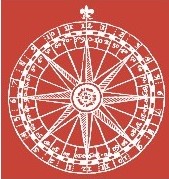Building Opposition at the Early Tudor Tower of London: Thomas More’s Dialogue of Comfort
Medieval and early modern English monarchs constructed the Tower of London’s iconography to symbolize royal power, creating a self-promoting royal ideology of the Tower. However, the Tower’s cultural significance turned sharply when Thomas More…
Listée dans Article | publication par groupe Iter Community
Version 1.0 - publiée le 19 Oct 2025
Sous licence Creative Commons BY-NC 4.0
Description
Medieval and early modern English monarchs constructed the Tower of London’s iconography to symbolize royal power, creating a self-promoting royal ideology of the Tower. However, the Tower’s cultural significance turned sharply when Thomas More wrote A Dialogue of Comfort against Tribulation (1534) as a Tower prisoner, laying the foundation for an early modern tradition of literary and cultural representations of the Tower as oppositional to the Crown. In the Dialogue, through four progressive transgressions against Henry VIII, More defies the royal ideology of the Tower and refashions the Tower itself as a symbol of resistance to royal tyranny. Les monarques anglais du Moyen Âge et de la Renaissance ont représenté la Tour de Londres comme un symbole du pouvoir royal, mettant ainsi en place une idéologie de la Tour promouvant la royauté. Toutefois, la signification culturelle de la Tour a subi un retournement rapide lorsque Thomas More a écrit A Dialogue of Comfort against Tribulation (1534), alors prisonnier à la Tour ; l’ouvrage a en effet posé les fondations d’une tradition littéraire et culturelle présentant la Tour comme un lieu d’opposition à la couronne. Dans le Dialogue, à travers quatre étapes progressives de contestations à l’égard d’Henri VIII, More remet en question l’idéologie royale de la Tour, et la redéfinit comme un symbole de résistance à la tyrannie royale.
Citer ce travail
Les chercheurs doivent citer ce travail comme suit :
Tags
Notes
Original publication: Deiter, Kristen. "Building Opposition at the Early Tudor Tower of London: Thomas More’s Dialogue of Comfort." Renaissance and Reformation 38 (1): 2015. 27-56. DOI: 10.33137/rr.v38i1.22781. This material has been re-published in an unmodified form on the Canadian HSS Commons with the permission of Iter Canada / Renaissance and Reformation. Copyright © the author(s). Their work is distributed by Renaissance and Reformation under a Creative Commons Attribution-NonCommercial 4.0 International License. For details, see https://creativecommons.org/licenses/.
Aperçu de la publication
Iter Community
This publication belongs to the Iter Community group.
When watching a publication, you will be notified when a new version is released.
